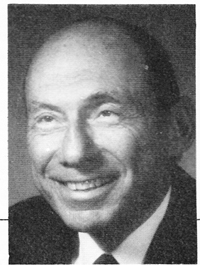''You Didn't Wear Your Retainer.''
Many orthodontists accept relapse following treatment as a natural biologic event, but many patients--even those who appear to be accepting it--do not. They come to have their teeth straightened, spend a great deal of time, effort, and money for it, and have the reasonable expectation that they will have straight teeth not only immediately following treatment, but beyond.
A distinction should be made among relapses. Lower anterior relapse is not simply rerotation. Overbite, cuspid position, interincisal angle, and muscle forces are factors--and there are undoubtedly more than these. There appears to be some evidence that fiberotomy may reduce--not prevent--rerotation, but the procedure has not caught on among orthodontists, who do not like to cut into tissue.
Rerotation of posterior teeth has the same connotations as rerotation of anterior teeth relative to fiber action, occlusal factors, and expansion. There appears to be a difference between bodily expansion and tipping expansion. It is tempting to think that A-P relapse is similar to arch collapse, but in a different direction. There is a difference between tipping sideways or backward past an upright position and bodily movement. A-P relapse of posterior correction also occurs with the creation of dual bites, often with strong Class II elastics or functional appliances. That is a good reason for an observation period after each of these procedures to assure that the correction was made, or for applying the Condylar Test of Drs. Henri Petit and Michel Chateau (JCO, October 1984). A quick return is not a relapse--the correction was never really made.
Relapse is common in the vertical plane. Relapse of a corrected open bite is serious, because it probably identifies cases in which the tongue has become too dominant and active a force. Most open bites in children close when the tongue is prevented from thrusting into the opening on speaking and swallowing, or when some other orthodontic appliance is used. Relapse of a closed bite is frequent, and has been described as being of no great consequence in the amount usually seen in cases that close to some extent after treatment. This opinion might change if more cases were observed for a longer post-treatment period.
It is widely believed that overcorrection reduces or prevents relapse. Yet solid evidence is lacking, and the clinical observation that an overcorrected malocclusion did not relapse is hardly proof that the same result would not have occurred with adequate correction rather than overcorrection. Overcorrection of open-bite and overbite, overparalleling, and overtorquing do not even survive the test of clinical impression. Overcorrection of intercuspation has some clinical support, but no hard evidence. Only overcorrection of rotations has been studied carefully, and the evidence is positive to some extent, though not overwhelming. It stands to reason that if you create a different malocclusion by overcorrection, then the forces of occlusion may correct the overcorrection through interaction of cusps--in whatever direction the overcorrection may be away from correct anatomical intercuspation for the individual. If the overcorrection is by distal tipping, it is no surprise that such teeth may upright forward.
It used to be believed--and still is in many quarters--that a malocclusion is in equilibrium with the adjacent musculature, and that conforming to the original arch form would contribute to stability. A great many bicuspids were extracted on this basis, but extraction cases relapse, too.
How often do orthodontists observe a developing condition in a young adult in which the lower incisors become crowded and move a lower incisor labially, and that tooth, in turn, moves an upper incisor labially? It is almost a young adult syndrome. Since this occurs in both treated and untreated cases, the implication may be that a "relapse" is sometimes a second malocclusion. If that is true in some cases, it would be important to be able to differentiate. The term "relapse" should mean a return toward an original condition, but it has taken on a broader meaning to include almost any post-treatment irregularity. This suggests that if orthodontists are to try to retain corrections and prevent relapse or additional malocclusion from creating later irregularity, we are going to have to strengthen initial and ongoing diagnosis, and continue to see patients indefinitely.
With the multiple potential causes of post-treatment irregularity that there are, it is too easy for an orthodontist to fall into the trap of accepting it as an inevitable biologic event, or to fall back on self-absolution by placing the blame on the patient: "You didn't wear your retainer".
People wear as unattractive a removable appliance as eyeglasses out of necessity, but trade them for an invisible removable appliance--contact lenses--if they can. Since there is not as much motivation to wear an orthodontic retainer as there is for eyeglasses, it is not surprising that even the best of patients gradually lose interest in wearing a retainer; to ask someone to use a removable retainer for a lifetime is not so much unreasonable as it is unrealistic.
Patients deserve better from us, and our image will be vastly improved if we address the problem in practical terms. With the advent of direct-bonded retainers, we can offer patients fixed, invisible artificial stability if it is not forthcoming naturally. With more sharing of clinical experience and more thoughtful evaluations of the problems, we may well reduce or eliminate this blot on our escutcheon and the empty accusation, "You didn't wear your retainer".


